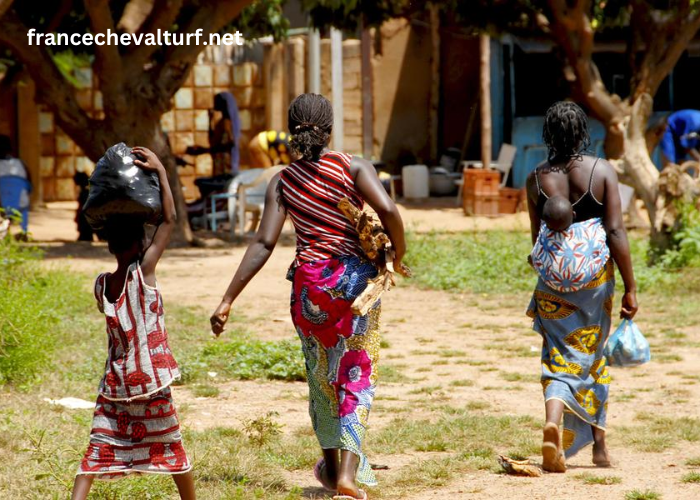The weather conditions in Ouagadougou, especially regarding rainfall, significantly impact both the daily lives of residents and the city’s agricultural landscape. The term “Météo Ouaga Pluie” captures the attention of people seeking to understand the shifting weather patterns, especially during the rainy season. Understanding the frequency and intensity of rainfall can help residents, farmers, and businesses in Ouagadougou prepare better for the upcoming weather conditions.
In recent years, the climate in Ouagadougou has been showing noticeable fluctuations. While rainfall is crucial for crop growth, it can also pose challenges, especially when excessive or too scarce. The Météo Ouaga Pluie is closely monitored by local authorities and meteorologists to provide accurate forecasts, which helps the population manage daily routines and agricultural activities more effectively.
How Does Météo Ouaga Pluie Affect Daily Life?
The effects of Météo Ouaga Pluie are felt daily by the people of Ouagadougou. During the rainy season, the weather often causes traffic disruptions, as roads become slippery and flood-prone. This impacts transportation and commuting, making it difficult for people to go about their daily routines. Farmers also have to plan their schedules around the rains, as they influence crop planting and harvesting times. For city dwellers, there is often a need to adjust to unpredictable rainfall, preparing for the possibility of sudden downpours. Overall, Météo Ouaga Pluie influences nearly every aspect of life, especially during the peak of the rainy season.
Rainy periods can bring both benefits and challenges. For example, Météo Ouaga Pluie leads to improved water supplies, which helps both agriculture and drinking water availability. However, the heavy rains can also result in flooding, which damages infrastructure, including roads, homes, and bridges. The government and local authorities closely monitor these weather patterns to mitigate such impacts, issuing alerts when necessary. Thus, Météo Ouaga Pluie is crucial not only for the farmers but also for the city’s urban planning and resilience.
What Is the Impact of Météo Ouaga Pluie on Agriculture?
Agriculture is one of the main industries affected by Météo Ouaga Pluie, as the seasonal rains are vital for crop growth. The city of Ouagadougou is surrounded by farming communities that rely heavily on the weather patterns. A good rainy season ensures the growth of crops such as maize, millet, and sorghum, which are staple foods in the region. However, the unpredictability of rainfall can be problematic, with either too much or too little rain harming agricultural production.
Farmers monitor Météo Ouaga Pluie closely, adjusting their planting and harvesting schedules accordingly. A shortage of rain can lead to drought conditions, significantly reducing crop yields, while excessive rain may cause waterlogging and crop destruction. Farmers have adopted various methods to adapt to these conditions, such as rainwater harvesting systems and better soil management practices. Thus, understanding Météo Ouaga Pluie is key to optimizing crop production and ensuring food security in Ouagadougou.
How Can Meteorologists Predict Météo Ouaga Pluie?
Meteorologists in Ouagadougou rely on advanced weather forecasting tools to predict the Météo Ouaga Pluie. These tools include satellite imagery, weather radar, and sophisticated mathematical models that analyze air pressure, temperature, and humidity levels. The forecasts help locals prepare for upcoming rain showers and storms, ensuring they are equipped for whatever weather conditions may arise. Forecasting also plays a significant role in predicting the intensity and duration of the rain, which is vital for both urban and rural planning.
Additionally, Météo Ouaga Pluie forecasts can inform farmers about when to expect rain, helping them plan their crop irrigation and other agricultural activities. Accurate forecasts are essential for mitigating risks associated with poor harvests or flood damage. Weather stations across Ouagadougou and Burkina Faso continuously collect data to provide up-to-date reports on Météo Ouaga Pluie, making it possible for both the city’s residents and farmers to adjust accordingly.
How Does Météo Ouaga Pluie Affect Urban Infrastructure?
Urban infrastructure in Ouagadougou faces unique challenges during the rainy season due to Météo Ouaga Pluie. Heavy rains can cause flooding, which damages roads, bridges, and buildings. The city has invested in drainage systems to direct rainwater away from urban areas and prevent widespread flooding, but there are still areas prone to waterlogging. When heavy rains occur, the city’s transport system often faces delays, and flooding can disrupt normal activities.
Flooding caused by Météo Ouaga Pluie also leads to health concerns, as stagnant water can become breeding grounds for disease-carrying mosquitoes. To counter this, local authorities take preventive measures, including clearing gutters and constructing better drainage networks. The effects of Météo Ouaga Pluie are a constant reminder of the importance of resilient urban planning, especially as climate patterns continue to change and become more unpredictable.
What Are the Long-Term Effects of Météo Ouaga Pluie on the Environment?
Over time, Météo Ouaga Pluie has influenced the environmental landscape of Ouagadougou and its surrounding areas. The frequency and intensity of rainfall have fluctuated, leading to environmental shifts that affect local ecosystems. On one hand, consistent rainfall supports the growth of vegetation and the replenishment of groundwater reserves. On the other hand, extreme weather events such as floods can lead to soil erosion and the destruction of habitats for wildlife.
The long-term impact of Météo Ouaga Pluie also includes challenges related to land use. Unpredictable rainfall patterns can affect agricultural productivity, forcing farmers to adapt by changing their farming techniques or moving to different areas. The changes in rainfall also affect the quality of water resources, making it harder for the city and its people to access clean water. Therefore, understanding and adapting to Météo Ouaga Pluie is key for preserving the environment and ensuring sustainable development in the region.
Conclusion
In conclusion, Météo Ouaga Pluie has a significant impact on various aspects of life in Ouagadougou. From agriculture to urban infrastructure, the patterns of rainfall affect everything from crop yields to transportation.
Understanding the shifts in the weather and preparing for the challenges posed by rainfall is vital for the population’s well-being. As meteorological predictions improve, both the people and government of Ouagadougou can adapt better to the changing climate, ensuring the city thrives despite its weather challenges.




